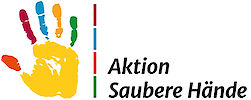Information on shoulder arthrosis
What is omarthrosis?
Omarthrosis or shoulder arthrosis is a progressive joint wear in which the cartilage and bone of the shoulder joint are worn away.
Both the socket of the shoulder blade and the joint head of the upper arm can be chronically worn. If inflammatory changes manifest themselves in a worn shoulder joint, this is referred to as activated omarthrosis.
As our shoulder joint is exposed to relatively low pressure loads (compared to the knee joint, for example), shoulder arthrosis is rather rare. The exact cause cannot usually be identified, but metabolic disorders are suspected, particularly in older patients, which lead to an imbalance between cartilage formation and cartilage degradation.
Everyday or sports injuries that initially damage the joint and subsequently limit mobility and stability can also lead to the development of arthrosis. The reason for this is that the shoulder joint is primarily stabilized and moved by a group of muscles (rotator cuff), and a joint lip (labrum) also ensures the stability of the joint. Damage to the rotator cuff or labrum therefore results in a loss of joint stability, which has a negative effect on the cartilage surfaces of the joint.
Symptoms of shoulder arthrosis
Although wear and tear of the shoulder joint occurs less frequently than joint wear and tear on the lower extremities, an arthritic shoulder can still be very unpleasant and painful for the affected patients, which can also have far-reaching consequences, as mobility often deteriorates enormously. Even taking a glass out of the cupboard can be a painful ordeal for the patient. Many patients also experience pain more frequently at night, making long-term pain medication essential. Patients also complain of grinding and creaking noises from the shoulder joint during many movements.
Causes: How does shoulder arthrosis develop?
In addition to familial clusters of arthrosis, the main cause is long-term overloading of the shoulder joint. It is not uncommon for patients with osteoarthritis to have a history of accidents or sports injuries. Risk groups include patients who do manual work and who frequently work overhead. This places increased strain on all structures (muscles, tendons and ligaments) that are involved in stabilizing the joint. Injuries typically occur as a result of, for example, a fall on the shoulder or incorrect throwing technique. If one or more of the important stabilizing structures (e.g. supraspinatus tendon) are injured, the risk of developing osteoarthritis of the shoulder is significantly increased. Osteoarthritis is particularly likely to occur in the near future in the case of fractures near the joint, where articular cartilage may also be damaged. The reduced stability of the joint or the direct loss of cartilage then leads to a chronic degenerative development. The inflammation of the joint capsule causes the typical pain and restricted movement of osteoarthritis.
Diagnosis: How is shoulder arthrosis diagnosed?
The diagnosis of omarthrosis is made by a doctor after an immediate medical history (questioning) and orthopedic examination. If the patient describes noises when moving (crepitus) in addition to pain and restricted movement, the suspicion is confirmed with an X-ray or CT scan. The doctor pays particular attention to the position of the joint partners in relation to each other and the size of the joint space. An ultrasound scan or an MRI image can also provide more precise information regarding the condition of the soft tissue (muscles, tendons). This is important because it allows the condition of the joint to be assessed much more comprehensively.
What can you do about shoulder arthrosis?
The general rule is: the sooner you act, the more you can fix it. However, arthrosis cannot be completely cured because worn cartilage cannot be 100 percent restored. For this reason, the treatment of shoulder arthrosis aims, on the one hand, to prevent cartilage wear and, on the other hand, to suppress arthrosis that is already progressing and to relieve pain.
A basic distinction is made between conservative and surgical therapy, but it is often a combination of different approaches that ultimately leads to the best possible result.
Conservative therapy
Conservative therapy combines various therapeutic approaches and can therefore avoid surgery. Targeted exercise restores shoulder mobility and strengthens and stretches the rotator cuff. As part of physiotherapy treatment, the patient is advised to do specific exercises that they should also do independently. Heat and cold therapy are also often helpful.
Painkillers such as ibuprofen can be administered, which have an anti-inflammatory effect on the one hand and relieve pain on the other, making exercise easier to perform. In addition, medications such as hyaluronic acid can be injected directly into the joint to initiate cartilage-building processes.
It is equally important that the patient himself prevents the progression of arthrosis by avoiding certain activities such as overhead movements or overloading the joint. Long periods of immobilization of the shoulder should also be avoided and the joint should be moved regularly and subjected to moderate strain.
Shoulder arthrosis surgery: Who is shoulder surgery useful for?
Surgery is useful if a patient cannot achieve a satisfactory status of shoulder arthrosis through conservative therapy such as physiotherapy, injections and pain medication. In the case of an injury, such as a fracture of the upper arm near the joint, age also plays a role. While surgery is recommended for younger patients, it is more likely to be avoided for patients over 80 years of age. In some cases, surgery is unavoidable.
What surgical methods are there?
The number of methods and techniques for operations on the shoulder joint has increased significantly in recent years. There is now a suitable surgical method for every degree of severity of omarthrosis. A distinction is mainly made between joint-preserving and replacement procedures:
Arthroscopy
Shoulder arthroscopy can be used to make small "repairs" in the early stages of arthrosis in a minimally invasive procedure (little soft tissue damage, small scars). The surgeon removes scarred or inflamed tissue, cleans the joint and can even transplant cartilage. These techniques are used to delay arthrosis for as long as possible and to preserve the joint as anatomically as possible.
Shoulder prosthesis
If the arthrosis in the shoulder joint is not very advanced and is limited to one joint partner (acetabulum or head), a partial joint replacement can contribute to improved function and pain relief. This also allows bone-sparing surgery in the event of a replacement of prosthetic material. With a shoulder TEP (total endoprosthesis), the entire joint is replaced. Depending on the bone and muscle-tendon defects, the surgeon decides whether an anatomical or inverse (condyle and socket swapped) implant should be used.
Which doctors are specialists in shoulder arthrosis? Patients who suffer from shoulder pain or arthrosis in the shoulder joint should first and foremost see an orthopedic specialist specializing in shoulder surgery. Sports medicine specialists or orthopedic rheumatologists are also suitable contacts. If the diagnosis is confirmed and an operation is being considered, it is advisable to consult an experienced surgeon in the field of shoulder endoprosthetics. Patients can find these in both private practices and in joint and endoprosthetics centers. Bonn University Hospital is one of the best hospitals in Germany.














